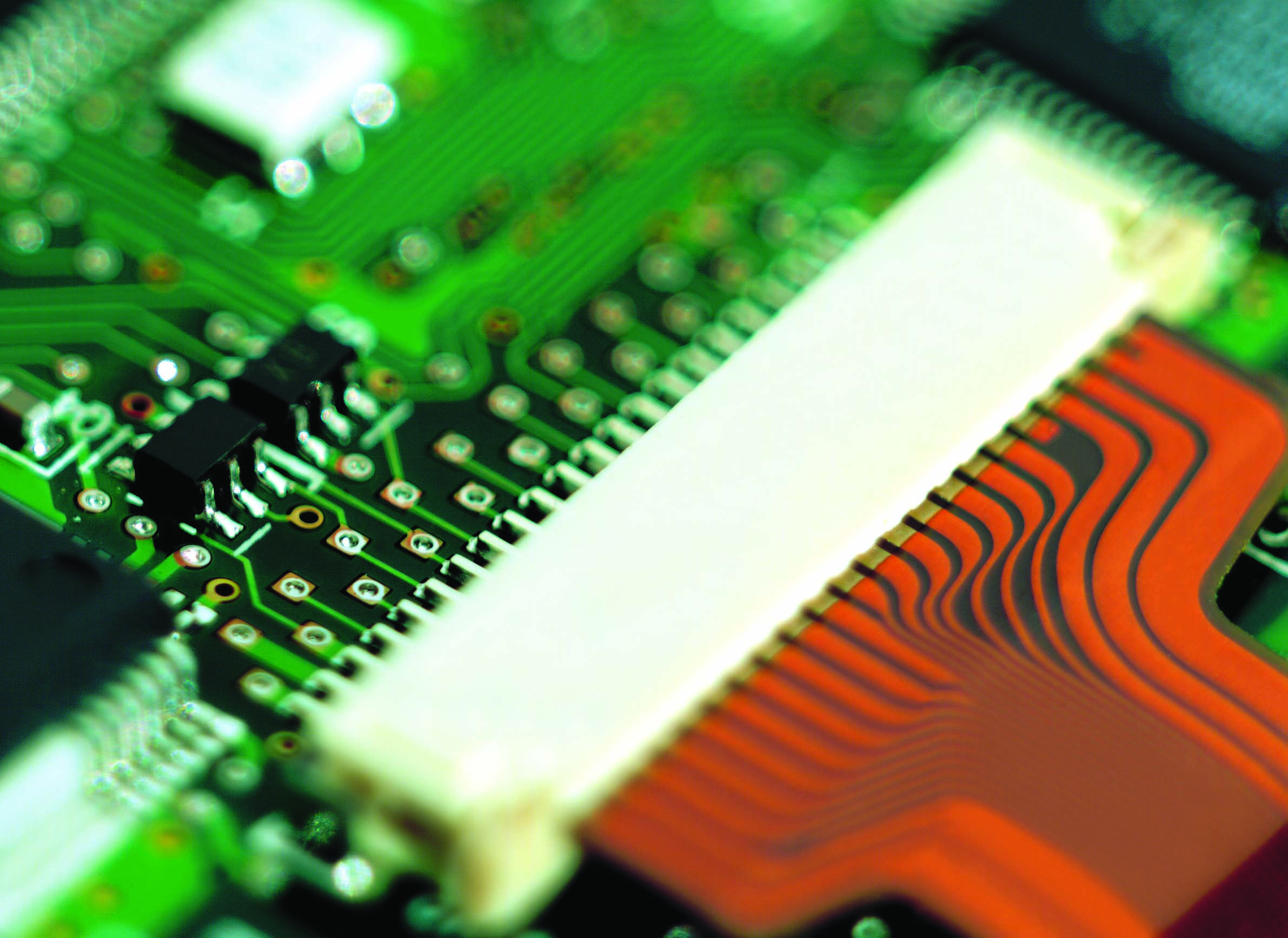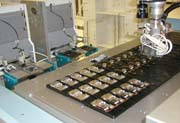
Flex circuits provide various advantages for electronic product manufacturers because of the performance, space, weight and flexibility characteristics they offer. Once a flexible circuit is designed and manufactured for a specific application, the ability to assemble or attach this circuit to the desired component in a cost-efficient manner is crucial. Assembling them into the electronic product can be challenging for manufacturers. To benefit completely from the advantages flex circuits offer, assembly has to be done not only quickly and accurately, but often in a three-dimensional shape as well. Assembly time, circuit or component scrap factors, and production throughput are the primary issues affecting the best solution for assembly. The combination of using a die-cut pressure-sensitive adhesive with precision-placement technology to assemble flexible circuits creates tremendous benefits in manufacturing costs, quality and throughput.
Challenge
The increasing demand for consumer electronic products, such as digital music players, PDAs, mobile phones and even storage devices, continues to drive these markets to smaller, lighter, and less expensive devices than ever before. The designs of these products include more complex flexible circuits that, in many cases, serve as the backbone of distributing signals to components throughout these devices. With this in mind, it becomes increasingly more important to make certain that these devices and their internal sub-assemblies are manufactured efficiently and cost effectively.More traditional methods of manual assembly can be cumbersome and time-consuming as these packages become smaller. In many cases, the accuracy required of placing adhesive components on these flexible circuits, or the actual placement of the flexible circuit itself, creates excessive scrap and rework, which makes it tedious if not impossible to repeat the process on a manual and cost-efficient basis. The use of precision-placement technology with die-cut pressure-sensitive adhesives creates a unique solution to reduce overall assembly costs while increasing throughput and quality. The combination of applying adhesive components to these flexible circuits, then placing the assembly onto the end component, creates an even greater possibility of generating the most benefits from this placement technology.

- Technical support and maintenance are simplified.
- Decreased downtime and quickly reconfigurable equipment are distinct advantages where product lifecycles are short and time-to-market is critical.
- The reusability factor of standardized equipment exceeds 95%, while the reusability of customized solutions cannot be forecasted.
- Shorter lead times of standard equipment allow crucial decisions to be made later in the planning process when more information is available.
- Equipment manufacturers can have the machinery "on the shelf," or manufacturing sites could have automation in place prior to design finalization.
- Time-proven, predictable production-rate data will provide extremely accurate planning and forecasting.
- Prototyping runs and capability studies can be performed early in the process, prior to production exposing any problems.
- Capital costs are spread out, significantly reducing overall assembly costs.

Case Study
One example showing the benefits of joining flexible circuit assembly and the complex adhesive components placed on these circuits involved the use of an AccuPlace APAC fully automated X-Y gantry robot system. The end user had been manually placing seven individual adhesives to a populated flexible circuit, then assembling this sub-assembly into the target frame with different X-, Y-, and Z-axis locations. This process was taking an average of 15 minutes per completed assembly, with much waste and scrap due to the manual placement of adhesives using tweezers. The use of the APAC system provided a solution to the customer, assembling flex circuits requiring an assembly tolerance of +/- 0.2 mm accuracy onto the target housing in all three dimensions.The process began with the populated flexible circuits and frames introduced to the APAC system by the use of trays. The robot vacuum head picked up the flat flexible circuit and brought it to the AccuPlace RM3065 adhesive component feeding system, where it placed the flex circuit atop the seven-piece adhesive array. The RM3065 peeled the liner from the steadied part at the same time, affixing the adhesive array to the flex circuit. The robot vacuum head then moved the sub-assembly to a nesting station where the flat flexible circuit was worked to a set three-dimensional form to match the target housing perfectly. Once worked into shape, the robot head placed the flexible circuit into the housing in the exact location, with the pressure-sensitive adhesives affixing the circuit in place. The integrated vision system ensured that both the adhesive and the flexible circuit assembly were perfectly aligned. This fully automated system reduced the overall manual assembly cycle time of 12 minutes per sub-assembly to a cycle time of 18 seconds per sub-assembly, including vision inspection. And with the capability of re-tooling and re-programming the APAC system for future programs, this solution is as flexible as the circuits themselves.
At present, die-cut adhesives are readily available through a number of various converters and can be incorporated into the automation process. This allows standardized adhesive component feeding systems, such as the AP1515 or AP3065, to accurately place adhesives onto target parts. As the die-cut conversion technology continues to evolve, flexible circuits will eventually be able to be presented in the same fashion, allowing even greater benefits to automation with the marriage of flex circuits and adhesive components. When available, these converted flexible circuits will be integrated directly with standardized automation equipment, creating a plethora of opportunities to increase accuracy, improve throughput and reduce costs.
Conclusion
Many organizations recognize the benefits of standardization in their assembly processes. These organizations have focused on varying methods of standardization on the manufacturing floor, and continue to move to standardized methods throughout the supply chain. Although die-cut pressure-sensitive adhesives vary in all shapes and sizes, the technology to present these PSAs to standardized automated placement equipment is becoming more widespread. In addition, the increasing use of flexible circuits within smaller and more precise applications creates a unique challenge to standardize the assembly of these components using PSAs.The ability to incorporate standardized assembly equipment in the manufacturing process by marrying the accuracy of die-cut adhesives with the proliferation of flexible circuits will only multiply the many benefits that both of these technologies bring to the marketplace. And as the conversion of flexible circuits onto die-cut reels increases, these flexible benefits will grow exponentially, as will operational profits. Continued cooperation between flexible circuit manufacturers, die-cut adhesive converters and standardized assembly equipment suppliers will proliferate the blending of these technologies into creative and profitable market-driven solutions.For more information, visit http://www.accuplace.com.
